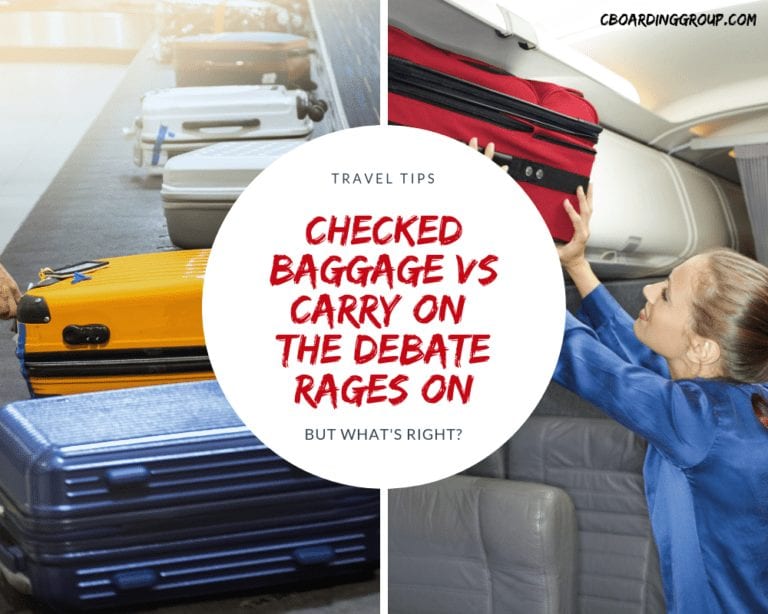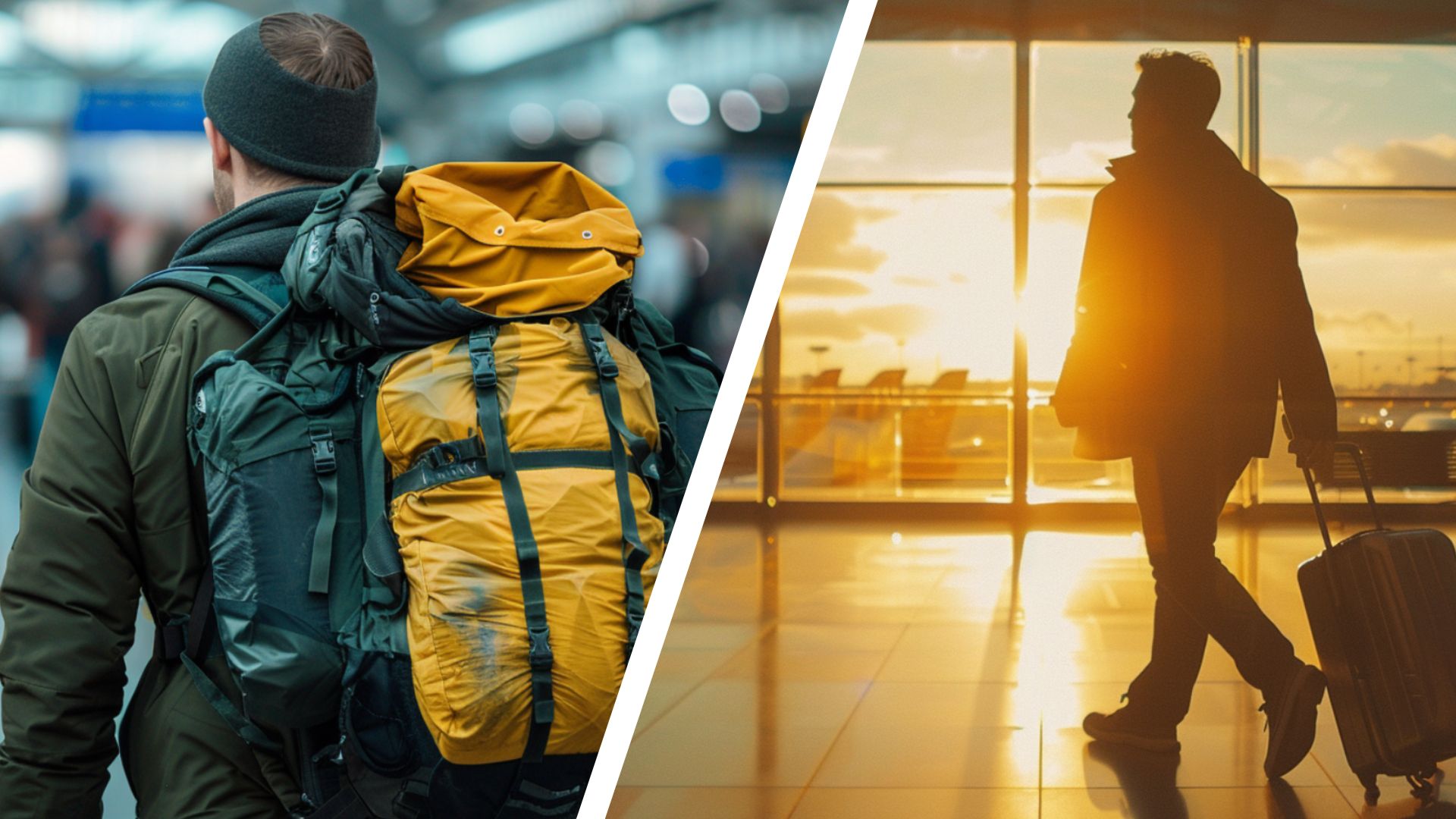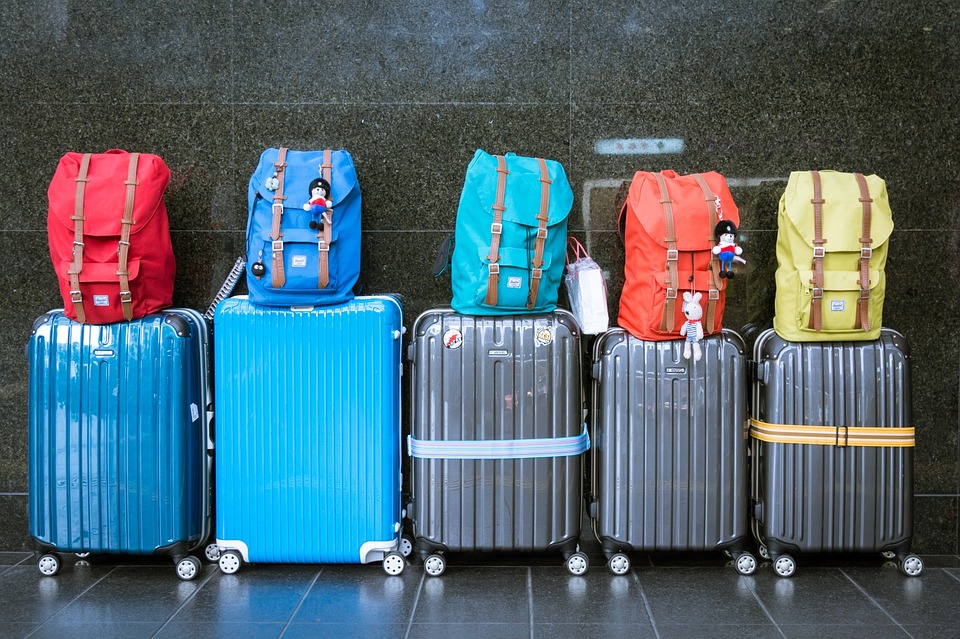Deciding between a checked bag vs carry on? Carry-ons save time and money, while checked bags offer more space. The best choice depends on your trip and travel style.

Table of Contents

- What Is the Difference Between a Carry On and a Checked Bag?
- The Case for Carry-On Luggage: Traveling Light and Fast
- The Freedom of a Checked Bag: Pack Everything You Need
- Carry-On vs. Checked Bag: A Side-by-Side Comparison
- How to Decide Which Luggage Is Right for Your Trip?
- The Hybrid Approach: Is It Best to Use Both?
- Choosing the Perfect Travel Companion
- Frequently Asked Questions about Travel Luggage
Checked Bag Vs Carry On: Pros, Cons, And How To Choose?
The moment of truth for any traveler arrives during the packing phase: should you commit to a single carry-on or go all-in with a checked bag? This decision impacts your budget, your time at the airport, and your overall travel experience. Understanding the distinct advantages and disadvantages of each option is the first step toward a smoother, more efficient journey. Whether you’re a minimalist jet-setter or a prepared-for-anything adventurer, making the right luggage choice is fundamental.

What Is the Difference Between a Carry On and a Checked Bag?
Before weighing the pros and cons, it’s essential to understand the fundamental distinction between these two types of luggage. The primary difference lies in where the bag travels during your flight and who is responsible for it.
A carry-on bag, also known as cabin baggage or hand luggage, is a piece of luggage you bring with you into the aircraft’s cabin. It must be small enough to fit in the overhead compartment or under the seat in front of you. You are responsible for this bag throughout your time in the airport and on the plane. Most airlines also permit one smaller personal item, such as a laptop bag, purse, or small backpack, in addition to your main carry-on.
A checked bag, or hold luggage, is handed over to the airline at the check-in counter. It is weighed, tagged, and transported in the cargo hold of the airplane. You do not have access to this bag during your flight and must retrieve it from the baggage carousel at your destination. These bags are subject to airline-specific fees and have much larger size and weight allowances.
The Case for Carry-On Luggage: Traveling Light and Fast
Traveling with only a carry-on has become a popular strategy for modern travelers who prioritize efficiency and control. By keeping your belongings with you, you sidestep many of the common frustrations associated with air travel.
Advantages of a Carry-On Bag
The benefits of forgoing a checked bag are significant, especially for shorter trips or for travelers who value speed and simplicity.
Cost Savings: The most compelling advantage is avoiding checked baggage fees. Most major airlines charge for the first checked bag, and these fees can add a substantial amount to your total travel cost, particularly for round-trip flights with connections. Traveling carry-on only means that money stays in your pocket for you to spend at your destination.
Time Savings: With a carry-on, you can check in online and head straight to the security line upon arrival at the airport, bypassing the often-long queues at the bag drop counters. Once you land, the time savings continue. You can deplane and exit the airport immediately, without the agonizing wait at the baggage claim carousel, wondering if your bag will be the first or last one out.
Security and Peace of Mind: Your luggage never leaves your sight. This virtually eliminates the risk of your bag being lost, delayed, or damaged by airline baggage handlers. All your valuables, essential documents, and must-have items are safely with you, providing invaluable peace of mind.
Convenience and Flexibility: Having your bag with you means you have access to your belongings during layovers or flight delays. Need a change of clothes or your toothbrush? It’s right there with you. This also provides greater flexibility if your travel plans change; it’s much easier to switch to an earlier flight if the airline doesn’t have to track down your checked luggage in the system.
Disadvantages of a Carry-On Bag
Despite its many perks, the carry-on-only approach isn’t without its challenges.
Limited Space: The most obvious drawback is the restricted packing capacity. Carry-on size limits force you to be a strategic, minimalist packer. This can be difficult for long trips, trips that require diverse wardrobes (like business and leisure), or travel to cold climates where bulky clothing is necessary.
Liquid Restrictions: You must adhere to the TSA’s 3-1-1 rule for liquids (containers of 3.4 ounces or 100 milliliters or less, all fitting in one quart-sized, clear zip-top bag). This means leaving full-sized toiletries at home or purchasing them at your destination, which can be an inconvenience.
Item Prohibitions: Certain items are not permitted in the cabin, including sharp objects like pocket knives or large tools. If you plan to travel with these types of items, checking a bag is your only option.
Physical Strain: You are responsible for maneuvering your bag through crowded airport terminals, lifting it into the overhead bin, and carrying it with you wherever you go. For those with mobility issues or travelers who simply prefer to be unencumbered, this can be a physical burden.
The Freedom of a Checked Bag: Pack Everything You Need
For many, the ability to pack without restriction is a luxury worth paying for. Checking a bag liberates you from the constraints of carry-on travel, allowing for a more relaxed and hands-free airport experience.
Advantages of a Checked Bag
Choosing to check a bag can simplify the packing process and your journey through the airport itself.
More Packing Space: This is the number one reason travelers check a bag. You can pack everything you want without worrying about fitting it into a tiny suitcase. This includes extra outfits, multiple pairs of shoes, bulky sweaters, and specialized gear for activities like skiing or diving.
Fewer Item Restrictions: Pack your full-sized shampoo, sunscreen, and other toiletries without a second thought. Souvenirs, including liquids like wine or spirits, can be safely stowed. Items prohibited from the cabin can be packed in your hold luggage, offering much greater packing freedom.
Airport Convenience: Once you drop your bag at the check-in counter, you are free to navigate the airport hands-free. You can walk through the terminal, grab a coffee, or browse shops without dragging a rolling suitcase behind you. This can make the airport experience significantly more pleasant and less stressful.
Disadvantages of a Checked Bag
The convenience of a checked bag comes with its own set of potential problems.
Additional Costs: As mentioned, checked bag fees are now the norm. These fees are typically charged per bag, per flight segment, meaning costs can quickly multiply for a family or on a multi-leg journey.
Wasted Time: The time you save by not carrying your bag through the airport is often spent waiting in line—first at the bag-drop counter and later at the baggage carousel upon arrival. This can add a significant amount of time to your total journey.
Risk of Loss or Damage: Entrusting your belongings to an airline always carries a small risk. Bags can be delayed, sent to the wrong destination, or lost entirely. They are also subject to rough handling, which can lead to damage to both the suitcase and its contents.
Inaccessibility During Travel: Once your bag is checked, you won’t see it again until you land. If you need medication, a jacket, or a book that you accidentally packed, you’re out of luck until you’re reunited with your luggage.
Carry-On vs. Checked Bag: A Side-by-Side Comparison
To help you visualize the key differences, here is a direct comparison of the most important factors.
| Feature | Carry-On Bag | Checked Bag |
|---|---|---|
| Cost | Usually free (some budget airlines charge) | Fees typically apply and vary by airline |
| Time | Saves time at check-in and arrival | Requires time for bag drop and baggage claim |
| Security | High security; bag is always with you | Low risk of loss, delay, or damage |
| Convenience | Requires carrying/rolling through the airport | Hands-free airport experience |
| Packing | Limited space; liquid and item restrictions | Ample space; fewer restrictions |
How to Decide Which Luggage Is Right for Your Trip?
The right choice isn’t universal; it’s personal and depends entirely on the context of your trip. Ask yourself these questions to determine the best strategy for your specific journey.
Consider Your Trip’s Duration
For a weekend getaway or a short trip of up to four or five days, a carry-on is often sufficient. It forces you to pack efficiently and streamlines your travel. For trips longer than a week, a checked bag becomes more practical, allowing you to bring enough clothing and necessities without needing to do laundry.
Analyze Your Destination and Activities
What will you be doing, and what is the climate like? A beach vacation requires little more than swimwear and light clothing, making it perfect for carry-on travel. However, a ski trip to a cold climate involves bulky jackets, pants, and boots that will quickly overwhelm a small bag. Similarly, a business trip might require multiple suits and shoes, making a checked bag a better option.
Review Your Airline’s Baggage Policy
Never assume. Before you even start packing, check your airline’s specific rules for both carry-on and checked luggage. Size and weight limits can vary significantly between carriers, especially on budget or international airlines. Knowing the fees and restrictions in advance can save you from costly surprises at the airport.
Evaluate Your Personal Travel Style
Are you a minimalist who thrives on simplicity, or do you prefer to have options for any occasion? Do you value speed above all else, or do you prefer a more relaxed journey? If the thought of waiting at baggage claim stresses you out, commit to a carry-on. If the idea of restrictive packing gives you anxiety, give yourself the freedom of a checked bag.
The Hybrid Approach: Is It Best to Use Both?
You don’t always have to choose one or the other. For many travelers, especially on longer journeys, the best strategy is a combination of both. By using a checked bag for the bulk of your belongings and a carry-on for your essentials, you get the best of both worlds.
In this scenario, your carry-on becomes your travel lifeline. Pack it with anything you absolutely cannot afford to lose: medications, travel documents, electronics, a change of clothes, and basic toiletries. This way, if your checked bag is delayed, you have everything you need to be comfortable for a day or two. Your checked bag can then be used for the rest of your clothes, shoes, and full-sized liquids, freeing up your carry-on and taking the weight off your shoulders in the terminal.
Choosing the Perfect Travel Companion
The luggage you choose is more than just a container; it’s a critical piece of your travel gear. Investing in a high-quality, durable bag makes every part of the journey smoother. The right bag not only protects your belongings but also reflects your style.
Why a Quality Leather Duffle Makes the Ideal Carry-On
For the discerning traveler, a full-grain leather duffle bag is the ultimate carry-on. Unlike rigid rolling suitcases, a leather duffle offers flexibility, easily fitting into tight overhead bins or under seats. Its timeless style transitions effortlessly from the airport to a business meeting or a hotel lobby. Most importantly, the durability of full-grain leather, like that used in BeldTura’s handcrafted duffle bags, ensures it can withstand the rigors of travel for years to come, developing a unique patina that tells the story of your journeys.
Organizing with a Toiletry Bag
Whether you’re team carry-on or team checked bag, organization is key. A dedicated toiletry bag, or dopp kit, is essential. For carry-on travel, it keeps your 3-1-1 liquids separate and accessible for security screening. For a checked bag, it contains any potential spills, protecting your clothes from disaster. A durable and stylish BeldTura leather toiletry bag not only keeps your essentials organized but adds a touch of sophistication to your packing routine.
Frequently Asked Questions about Travel Luggage
What is the standard size for a carry-on?
While it varies slightly by airline, the most common domestic carry-on size limit is 22 x 14 x 9 inches (56 x 36 x 23 cm), including handles and wheels. Always confirm with your specific airline before flying.
Can I bring a personal item in addition to a carry-on?
Yes, most major airlines allow one personal item that can fit under the seat in front of you. This is typically a laptop bag, purse, or small backpack.
What happens if my carry-on is too big?
If your carry-on exceeds the airline’s size or weight limits, you will be required to check it at the gate. This often incurs a higher fee than if you had checked it at the ticket counter.
How can I avoid checked bag fees?
The easiest way is to travel with a carry-on only. Other options include flying with an airline that offers a free checked bag (like Southwest Airlines), achieving elite status with an airline’s loyalty program, or using a co-branded airline credit card that includes free checked bags as a perk.



